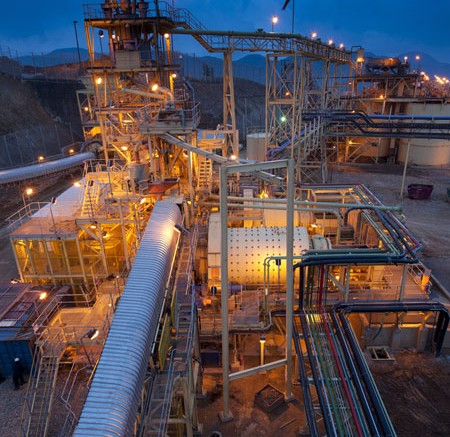Banro (TSX: BAA; NYSE-MKT: BAA) has crafted a large financing plan to improve its liquidity and ability to bring Namoya, its second gold mine in the Democratic Republic of the Congo (DRC), to full production. The plan includes a US$35.5 million liquidity backstop facility and US$121 million in gold stream arrangements.
The Toronto-based firm closed the liquidity backstop facility with investment funds managed by Gramercy Funds Management on Aug. 18. The facility includes the private placement of securities comprising senior secured notes and warrants for proceeds of up to US$35.5 million, of which it has already received US$27.7 million.
The company intends to use those proceeds to repay certain bank loans in the DRC, totalling US$12.8 million, to pay an upcoming interest payment due on its current outstanding notes, issued March 2012, and to fund the short-term capital program to bring the Namoya mine to commercial production.
Notes provided under the facility mature on July 31, 2016, and have an interest rate of 10% to 15% per year. The warrants have a three-year term and entitle the holder to buy 13.3 million Banro shares at 26.9¢ apiece.
This financing provides “some relief from immediate balance sheet pressures,” BMO analyst Andrew Breichmanas writes. The company ended the second quarter with a net loss of US$3 million, or US1¢ per share. It had a US$76.4 million working capital deficit and US$6.5 million in cash and equivalents, the analyst notes.
To improve its bleak position, the junior has also inked a non-binding memorandum of understanding with a private gold group for two gold sale transactions at its Twangiza and Namoya mines, amounting to US$121 million.
Under these proposed arrangements, Banro would receive US$41 million for the sale of 40,000 oz. gold from Twangiza, where it will deliver 10,000 oz. a year for four years.
At Namoya, the buyer would deposit US$80 million for 10% of the life-of-mine gold production to a maximum of 12,000 oz. a year. Upon delivery, the buyer will pay US$300 per oz. for the first 20,000 oz., and US$350 per oz. thereafter.
These agreements should close in mid-October, following due diligence and definitive documentation.
At both mines, the buyer has an option to purchase another 10% of the gold produced at spot prices.
Banro could terminate the Namoya streaming deal at any time for a one-time termination fee equal to a 15% internal rate of return on the initial deposit.
The company intends to use the proceeds from the gold streams to repay the notes issued under the liquidity backstop facility, to reduce its accounts payable, and to fund ongoing capital requirements and working capital.
BMO’s Breichmanas cautions these funds may not be enough in the medium to long term. If Banro uses the proceeds from the streaming deals to repay the notes issued under the liquidity backstop, it will have about US$85.5 million left, which Breichmanas believes is just enough to cover the near-term funding requirements for Namoya.
“With interest payments on existing debt, principal repayments, dividends payable on preferred shares, and now lower participation in gold sales due to the proposed streaming agreements, cash flow appears inadequate to meet longer-term obligations, in BMO Research’s view,” he explains.
In July, Banro revealed that the plant at Namoya could not reach design capacity because it was having problem processing large amounts of fine material, and that certain components in the wet portion of the carbon-in-leach circuit had to be upgraded to raise throughput to design capacity.
Banro expects to complete the upgrades later this year. It will also add an agglomeration drum to the circuit, “to bind the fine components of the ore to allow for efficient percolation of the cyanide solution,” John Clarke, the company’s CEO, said on a recent conference call.
Given the difficulties at the plant, Banro has already lowered the throughput at Namoya and halved its 2014 production guidance for the mine to 25,000 to 30,000 oz. gold.
Banro also trimmed Twangiza’s full year output to 90,000 to 100,000 oz., from 100,000 oz., citing a “wet start to the year.”
Along with the recent financing plan, the junior named Kevin Jennings as its new chief financial officer, effective Sept. 1, after which current CFO Donat Madilo will take on the new role of senior vice-president of commercial and DRC affairs.
Namoya sits 200 km south of the company’s Twangiza gold mine. Both operations are in the 210-km-long Twangiza-Namoya gold belt in the South Kivu and Maniema provinces.
Banro closed Aug. 21 relatively flat at 29¢ after gaining 47.5% in the last two trading days following the financing news.


Be the first to comment on "Banro finds ‘relief’ in new financing plan"